Fushimi Inari Shrine also known as the Fushimi Inari Taisha is an important Shinto shrine in Kyoto. Famous for the thousands of vermilion torii gates that straddle a network of trails behind the main temple, a hike up the mountain here is one of the popular things to do in Kyoto. The trails lead into the wooded forest of the sacred Mount Inari, which stands at 233 meters.
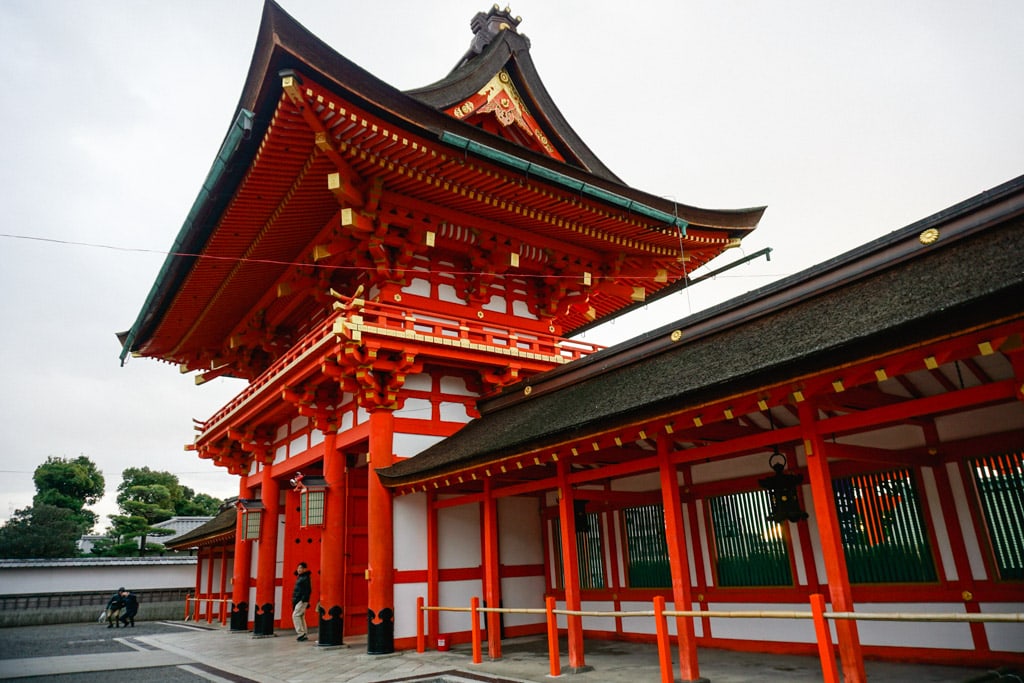
Fushimi Inari is the most important shrine dedicated to Inari, the Shinto god of rice. There are several thousand Inari shrines in Japan. The Fushimi Inari shrine is the head shrine for over 30 000 Inari shrines that are spread across Japan. Foxes are thought to be Inari’s messengers, and you will see many fox statues on the shrine grounds.
WHAT IS IN THIS POST
History of the Fushimi Inari Shrine
Fushimi Inari Shrine’s history predates the capital’s move to Kyoto in 794. In the seventh century, the Hata family began construction of the Fushimi Inari shrine, dedicating it to Inari, the god of rice and sake. As Japan transformed itself from an agricultural nation to an industrial one, the shrine became important for businesses as they believed that it brought them luck. Each one of the over 4000 Torii gates that line the trail up the mountain has been donated by a Japanese business to ensure their luck.
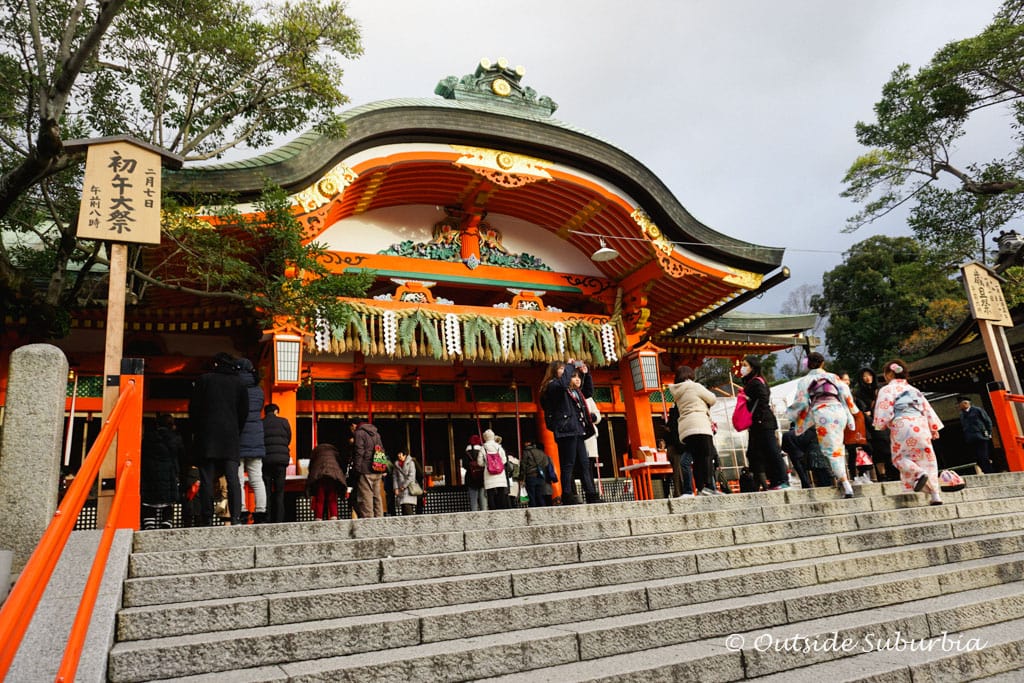
A hike through Thousands of Torii Gates
The oldest Torii gates at Fushimi Inari Shrine are from the 8th century, and new gates are constantly added. All Shrine’s vermilion Senbon Torii gates were donated by Japanese businesses, as a way to ask for a wish, or say thanks for a wish that was granted. Each gate is printed with the business name and the date that it was donated.
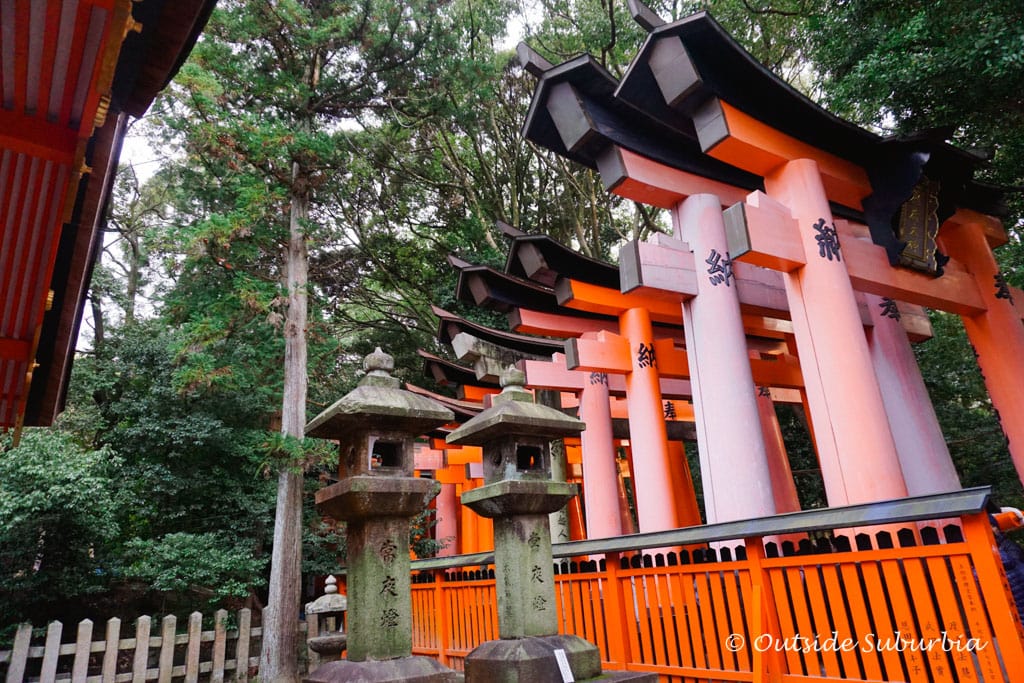
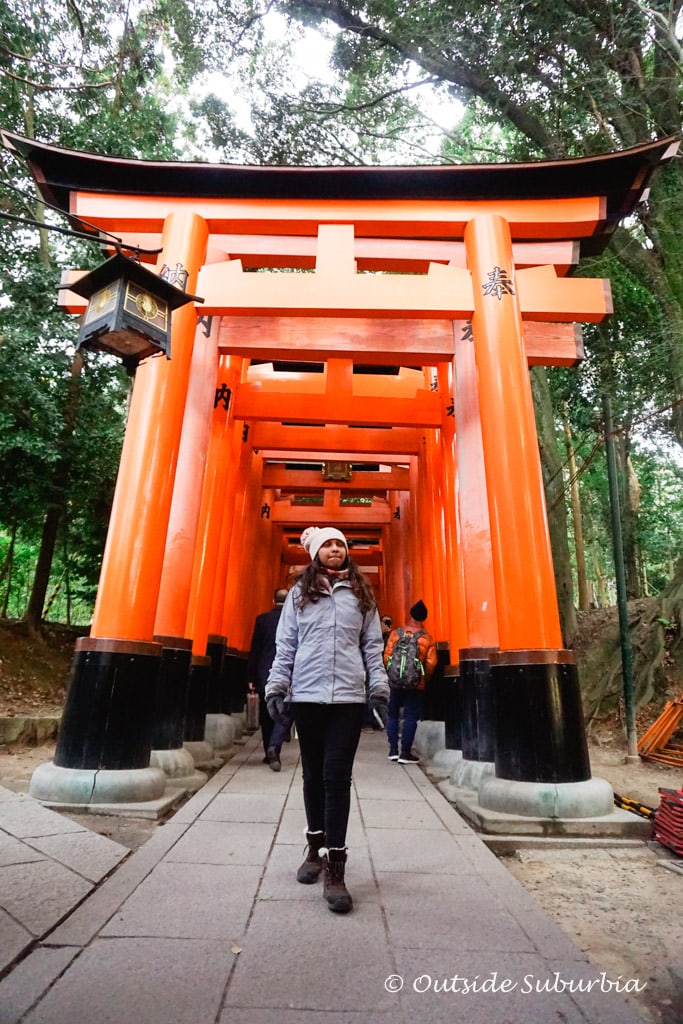
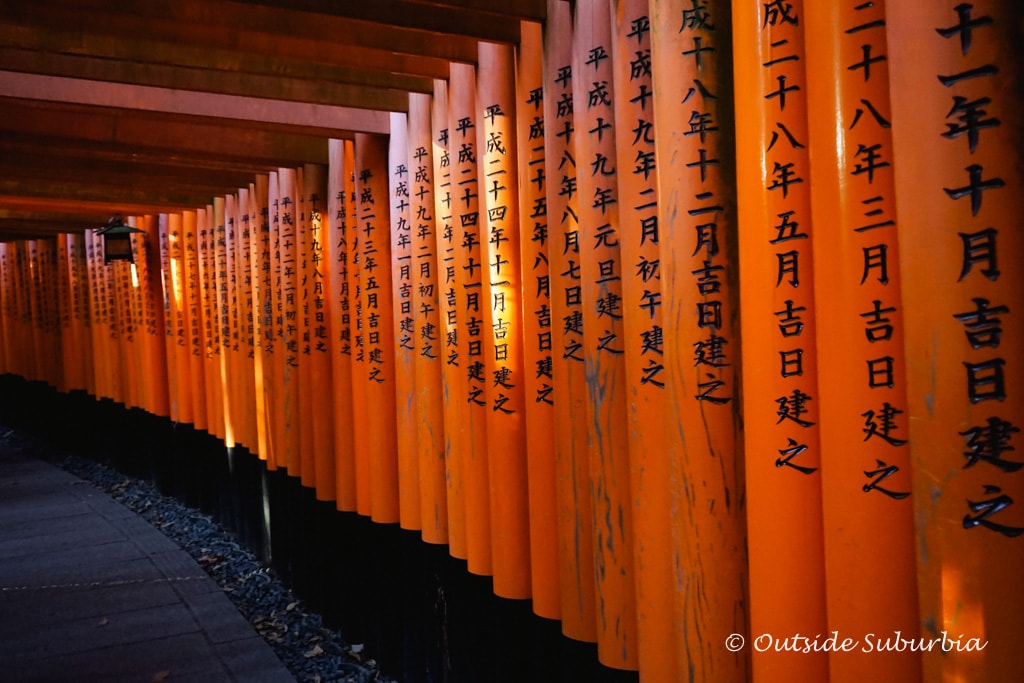

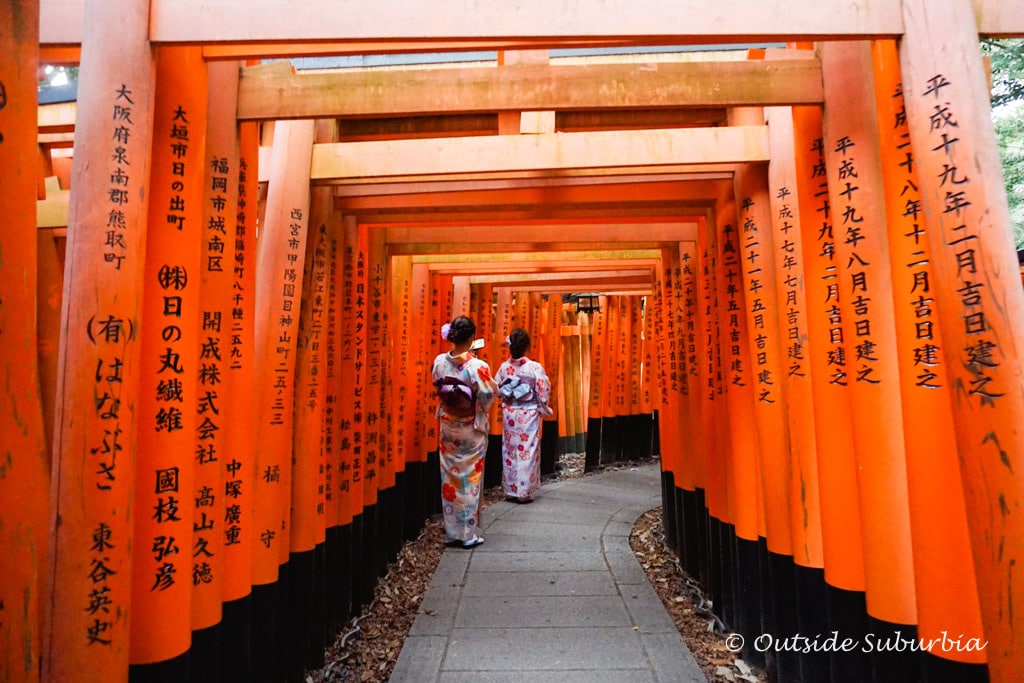
In some places, the gates stand so tight together forming a glowing red tunnel that winds itself up to the narrow mountain path.
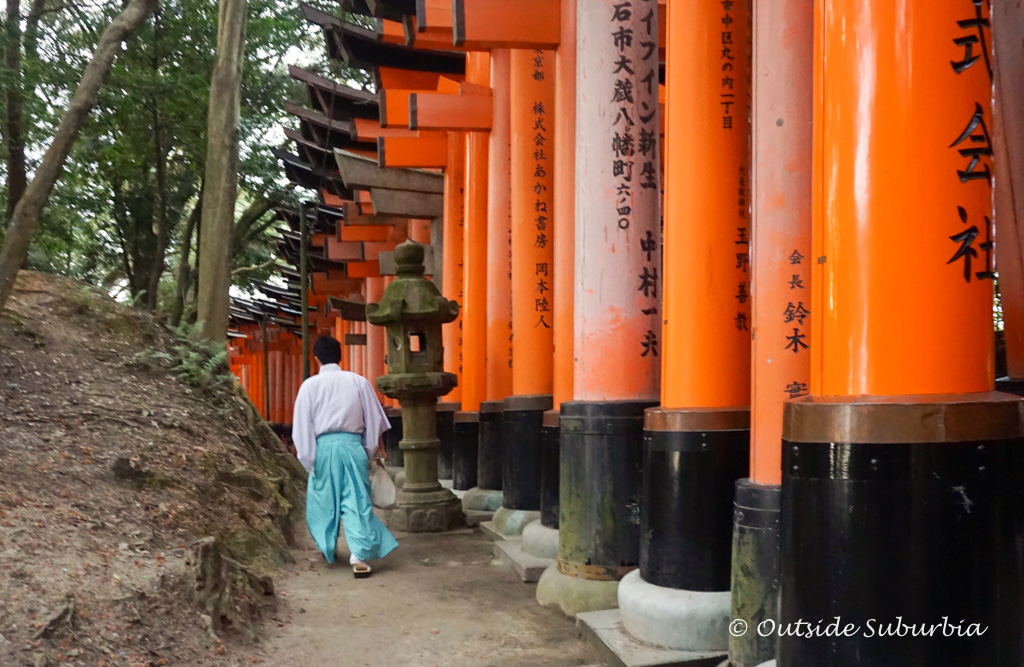
It will cost you upwards of $3000 for a small Torii gate and as much as $10000 for a large one. Along the way, there are multiple smaller shrines with stacks of miniature torii gates that were donated by visitors with smaller budgets. It is believed that the grounds actually contain anywhere from 10,000 to 30,000 torii gates of different shapes and sizes.
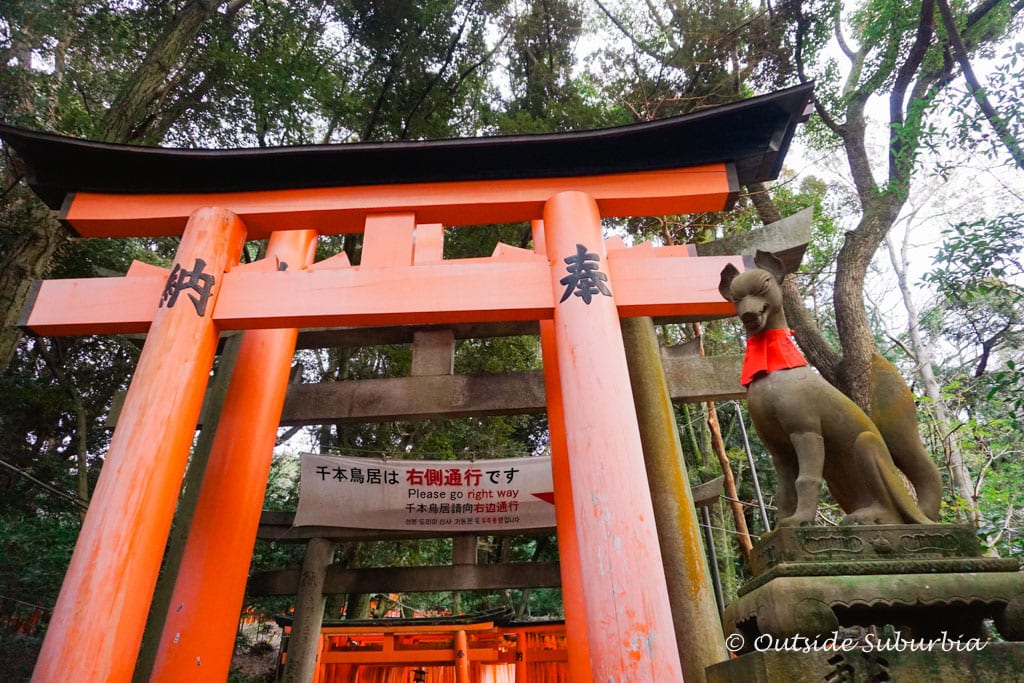
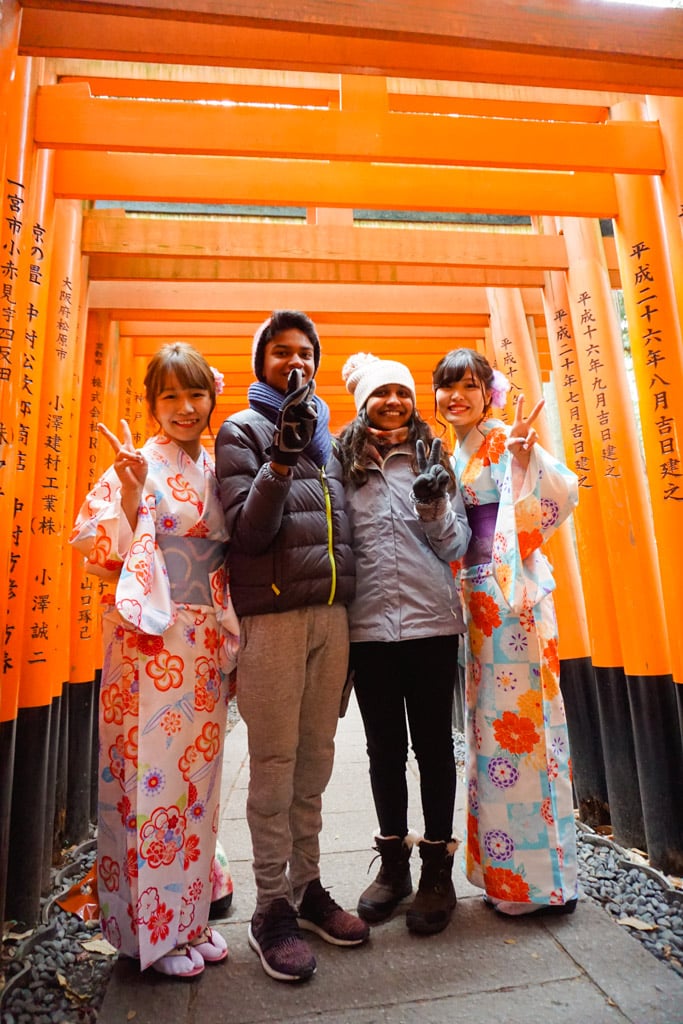
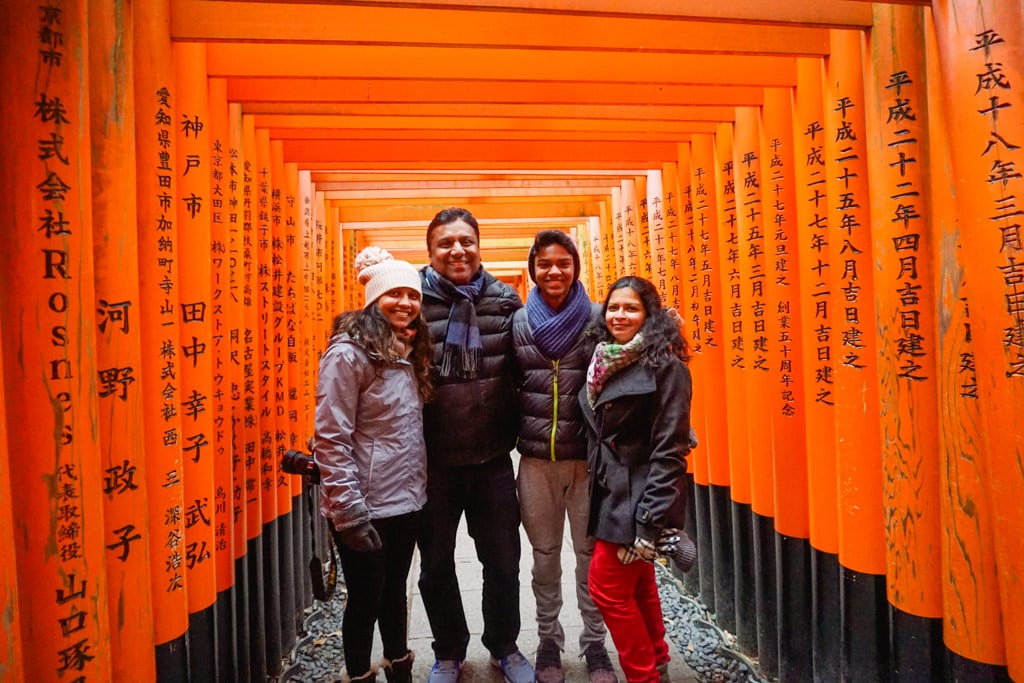
Fushimi Inari Shrine’s significance has only grown over the centuries, and it is now one of Kyoto and Japan’s most visited Shrines. During the Japanese New Year, millions of people come to pay their respect at the shrine.
Tips for visiting Fushimi Inari Shrine in Kyoto
The Fushimi Inari Shrine is Free. It never closes and it is open all day.
It takes two to three hours to walk all the way to the top of Mount Inari and back. You can always just walk as far as you wish and turn back.
It is respectful to walk along the edge of the path, rather than in the middle.
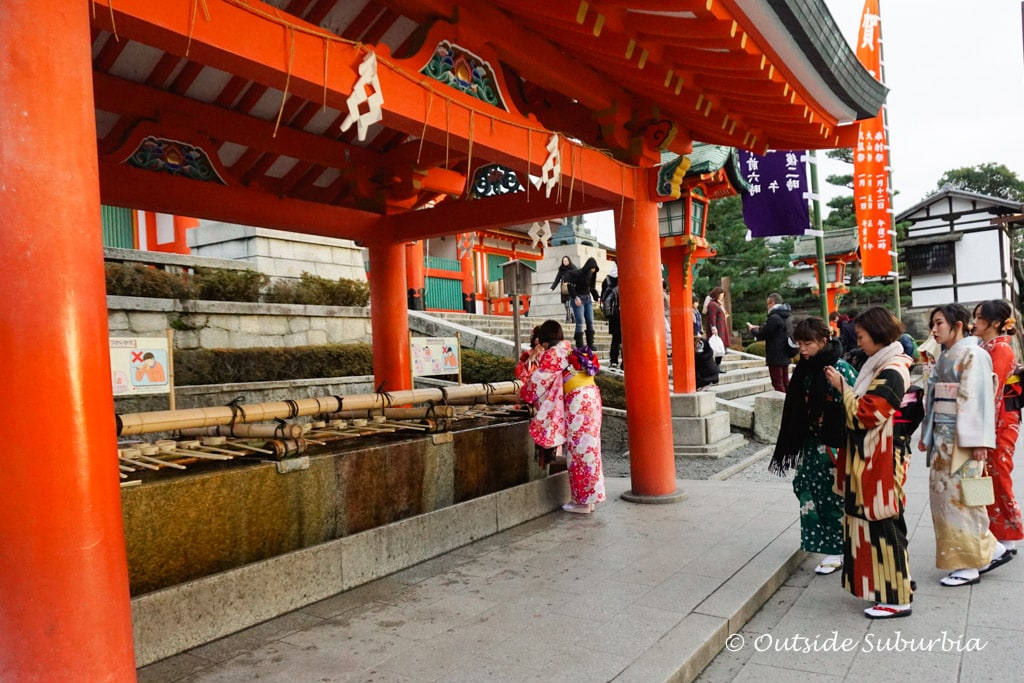
Along the path will be a trough of water and several ladles. With a ladleful of water, wash both hands and pour some water into cupped hands to cleanse the mouth. Never put the ladle directly to their lips.
You can ring the bell as a symbolic gesture to signal your arrival and a way to ask for the gods to listen to their prayers. Offer some coins in the offertory box.
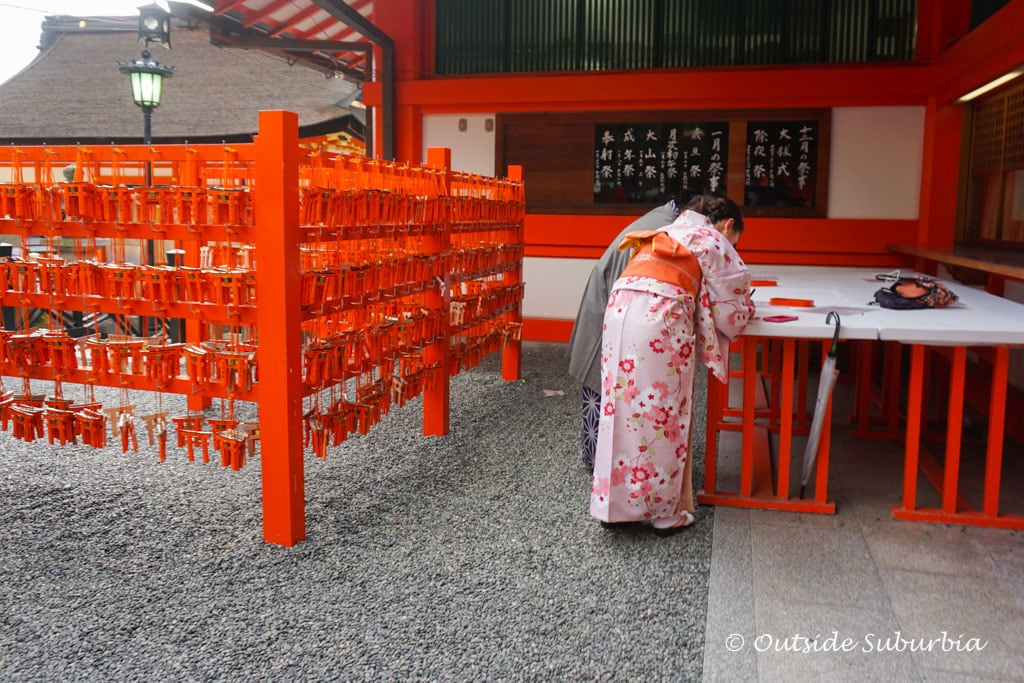
The procedure for offering prayers is as follows: bow deeply twice to a 90-degree angle, quietly clap twice, then join palms and pray. Finish by bowing deeply once more.
There are a few restaurants along the way that serve special dishes such as Inari Sushi and Fox Udon( (Kitsune Udon). Both contain pieces of fried tofu which is said to be the favorite food of foxes.
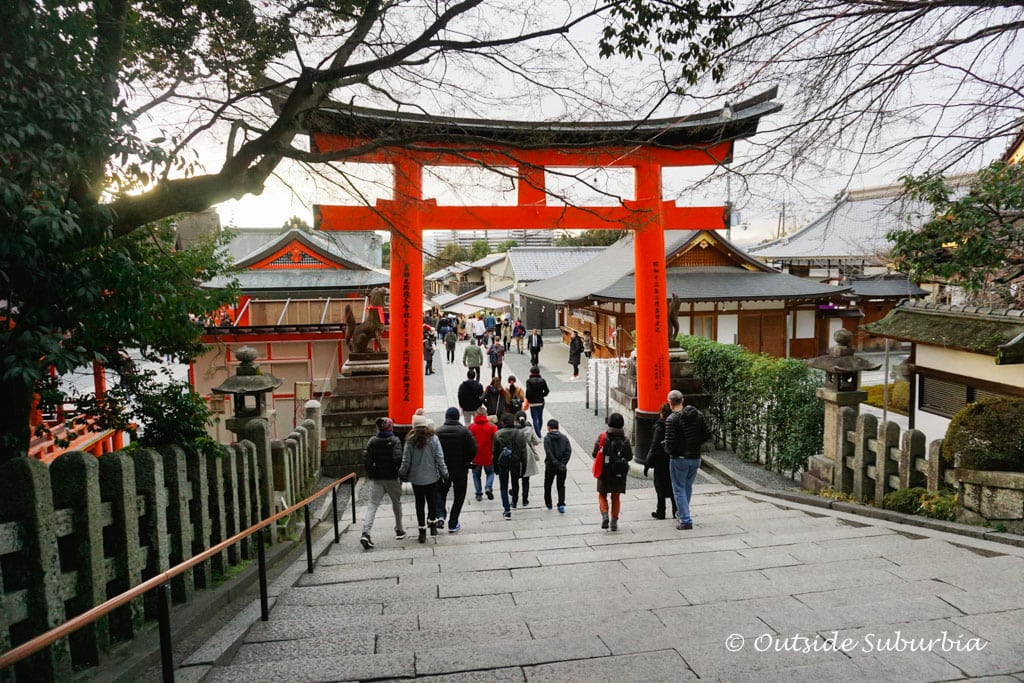
Japan has many temples and shrines, the Fushimi Inari shrine in Kyoto, however, is very unique and cannot be missed!
I recommend booking a private walking tour to visit the Fushimi Inari Shrine, the Golden Pavilion or discover a side of Kyoto off the beaten path. Hotel pickup and drop off is included.
You might also like:
Our 2 week Japan Itinerary
10 Best places to see Mt. Fuji
Best Temple & Zen Gardens in Kyoto
How to spend a day in Nara
PIN IT FOR LATER
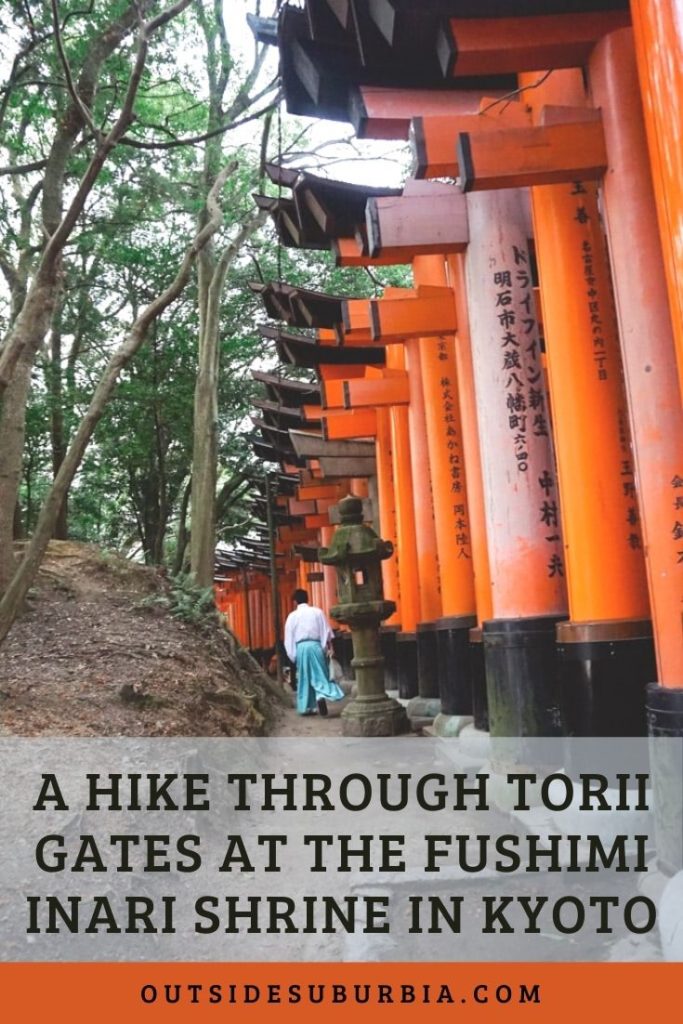
Note: This post may contain affiliate links, partnership or sponsored content. If you purchase an item via one of these links, we may receive a small commission at no extra charge to you. But as always images and opinions are our own. For more information on our affiliates and privacy policy at Outside Suburbia see here.
CONNECT WITH US
